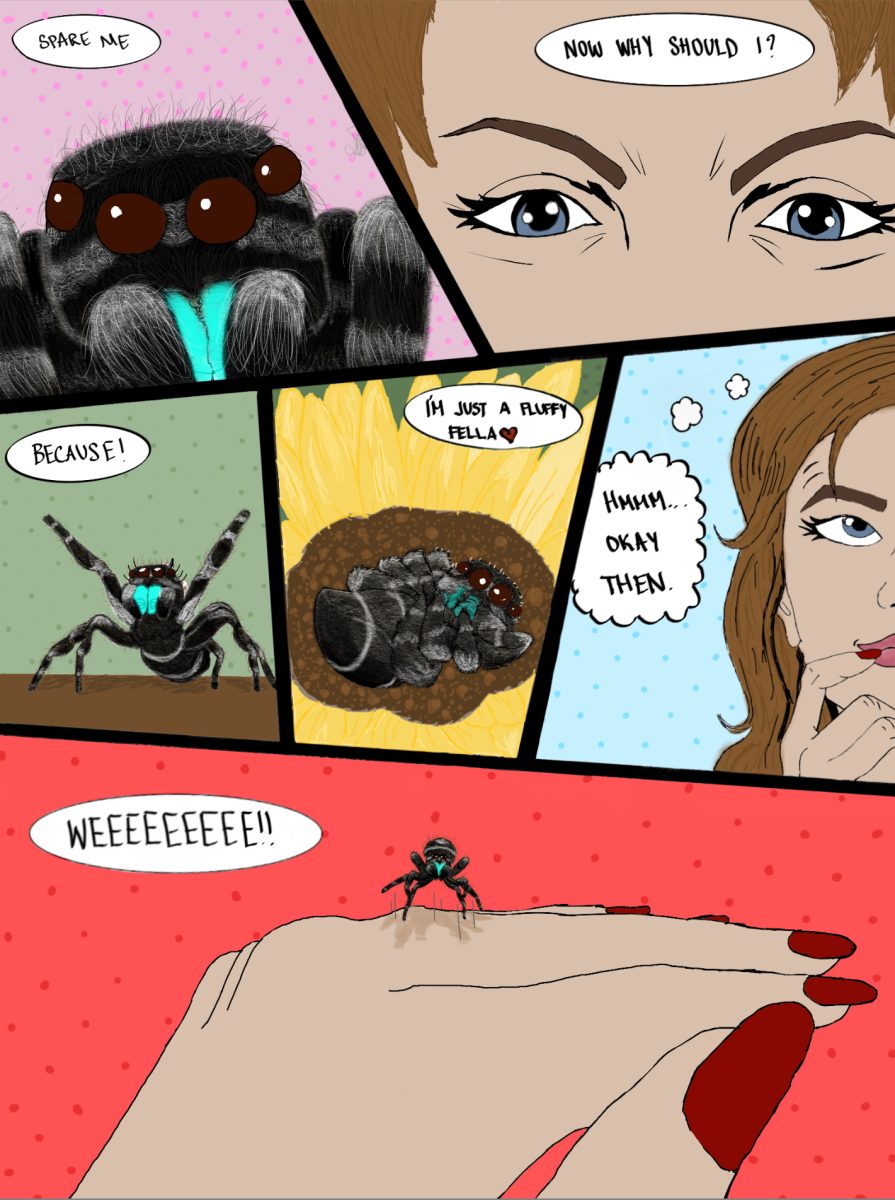Many people are afraid of spiders. Even for those who don’t have arachnophobia, or an intense fear of spiders, most, if not all spiders are regarded as scary and revolting to the general public. Chances are that your first instinct upon encountering a spider is, without a second thought, finding a way to exterminate it.
This was even something I witnessed firsthand, when, after finding a spider in class, the very idea of a small eight-legged animal was enough to lead my close-by classmates to back away and get out of their seats in an effort to avoid it.
While it is true that some spiders have venom or some capacity to cause harm to humans in their bites, it’s unfair to assume that this applies to all spiders. In fact, there are two types of spiders that should be more widely acknowledged as unthreatening to humans: jumping spiders and daddy-long-legs.
Jumping spiders are fuzzy and chubby, and can be distinguished by their large eyes, compact bodies, and strange jittery movement. Despite the fact that many people feel threatened when they hear that there are spiders that can hop and jump, jumping spiders are actually friendly and rarely bite. While, like many spiders, they do possess a weak venom to subdue prey, jumping spiders are not a threat to humans. Their bites will not require medical treatment.
Many people even keep jumping spiders as pets because of their adaptability and how common they are in various climates and environments. In fact, the spider I had encountered in class was a jumping spider, which I was able to hold on my hand without any issue—until it jumped away, and was then killed by a fearful classmate (which although understandable, was very unfortunate). These spiders are ridiculously easy to care for and find, and make for a cute, small and hassle-free pet! The only downfall is that, being spiders, they can only be expected to live for around two or three years.
Although not pets, daddy-long-legs are also arachnids that are likely residing in your home or garage, or perhaps they have at some point in the past. They are a common encounter, and it’s also a widespread saying that daddy-long-legs are “the most venomous of all spiders, but unable to harm humans because their fangs are too short to bite.” This is a story that I can personally recall being told as a child. While daddy-long-leg spiders are harmless, is it really just because their fangs are too short to bite us humans?
What most people don’t know is that the creatures that we call “daddy-long-legs” actually include two species of arachnids, the first being non-spiders called harvestmen, and second being a harmless spider species.
Harvestmen, not being true spiders, lack both venom and the ability to create webs. They mainly live in outdoor settings, and many follow a diet like that of scavengers, so they don’t even have fangs to begin with! Their bodies, unlike spiders, are only a single rigid structure rather than a separated head and abdomen like that of actual spiders, essentially making them a single vaguely round shape with very long, spindly legs.
The “true” daddy-long-legs and harvestman-look-alikes, which are called cellar spiders, are also, no surprise, not a threat to people.
While having fangs and the ability to make webs like most spiders, cellar spiders do not bite unless facing a direct threat. Their bites can cause a bit of temporary pain, and minor irritation at most, but this can be expected to subside within the next couple of days. Even so, cellar spiders can be trusted to be handled by people, and daddy-long-legs can retain their reputation as harmless pest control agents—even if the story about them being strong, venomous spiders cursed with short fangs is untrue.
Although some people may be put-off by the idea of a walking octad of hair-thin legs, I don’t see any particular reason to fear such a strange-looking and harmless creature.
Of course, just as it is unfair to assume all spiders are dangerous, it’s also illogical to assume all spiders are safe! While jumping spiders and daddy-long-legs are not a threat to humans, they’re also fairly recognizable and are easily distinguishable.
There are many other spiders that can pose a threat to humans, so what’s important is not judging these friendly spiders as dangerous simply because they resemble another kind of spider–too many tiny, harmless, eight-legged animals have been harmed in the name of illogical fear. So, keep these friendly arachnids in mind—although when uncertain, it’s best to keep a safe distance and figure out just what kind of creature you’re facing before rushing to either befriend it or kill it.









